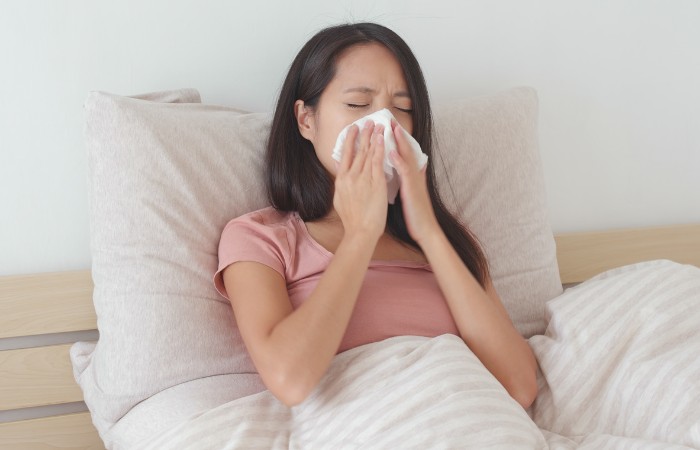
Your home is supposed to be a haven of safety, but what if you found out that it’s actually the source of your health problems? If you find yourself feeling ill whenever you’re at home, it might be due to the sick building syndrome (SBS).
Also known as the sick home syndrome, SBS is a condition in which occupants of a building experience a range of symptoms affecting their health. These symptoms vary from person to person and can include headaches, fatigue, dizziness, irritation of the eyes and respiratory problems.
In this article, we’ve compiled 9 reasons why your house may be making you sick and provide solutions to solve these problems!
Indoor Pollutants
It’s a common misconception to assume that pollutants are only located outdoors. In reality, harmful contaminants such as dust and mould are regularly found right inside your abode as well.
1. Dust and Dust Mites
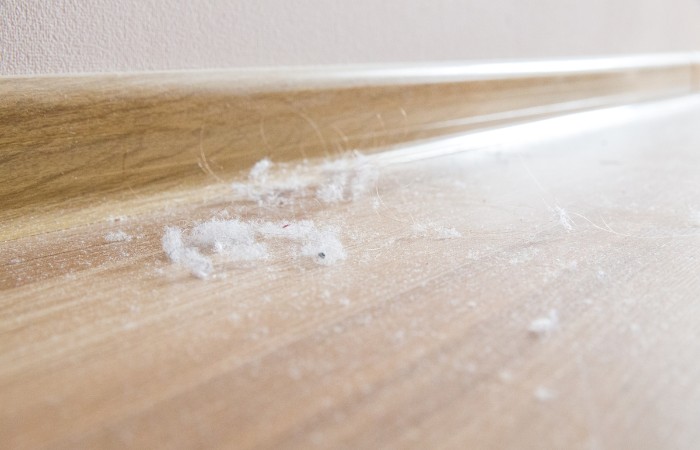
Even though dust is all around us, these tiny particles can go unnoticed because of their microscopic size. They’re often found in carpets, electronic devices, clothing and corners of a room. Sometimes, they can be blown in through windows that are left open for aeration.
One major concern about dust is the dust mites that they carry. Those who are allergic to dust mites may experience symptoms such as sneezing, headaches and worsening asthma.
To combat dust and dust mites, follow these tips:
- Perform regular cleaning and vacuuming to reduce the buildup of dust in your home
- Remove your shoes before stepping into the house
- Groom your pets regularly to reduce and prevent the buildup of fur and dander
2. Lead-based Paints
If you live in an old house built before the 70s, you might have lead-based paint in your quarters. This type of paint contains high levels of toxic heavy metals and can be a serious health hazard.
When ingested or inhaled by adults, lead dust and chips can cause lead poisoning and result in kidney damage and high blood pressure. In adolescents, this can result in developmental delays, learning difficulties and behavioural problems.
Protect the walls of your home with non-toxic paint:
- Seek the help of a professional painting service provider to safely remove lead-based paint
- Paint over the lead-based paint with non-lead-based paint that is also free from formaldehyde
- Use an encapsulant to cover up the lead-based paint
3. Mould and Mildew
Have you ever noticed how mushrooms pop up after a rainy day? Much like other fungi, mould and mildew thrive in damp, humid conditions. They’re often found in areas with high moisture levels such as bathrooms, basements and places with water damage or leaks.
When ceilings, walls or furniture absorb the moisture of the room and become damp, mould will start to grow on them. Just like how wet clothes can smell bad if not dried properly, mould and mildew smell stale and pungent.
Exposure to mycotoxins from moulds has also been linked to headaches and dizziness which can trigger vertigo and nausea.
Prevent the growth of mould and mildew:
- Use disinfectants and mould killers like Selleys Rapid Mould Killer to remove mould and mildew from hard surfaces
- Aerate your rooms by keeping windows and doors open
- Use ventilation fans in bathrooms and kitchens
- Repair leaks and water damage with sealants that stop mould growth such as Selleys No Mould Silicone Sealant
- Use a dehumidifier to control humidity levels indoors
- Remove and replace household items like rugs or drywall that have been contaminated with mould
4. Pesticides and Chemicals
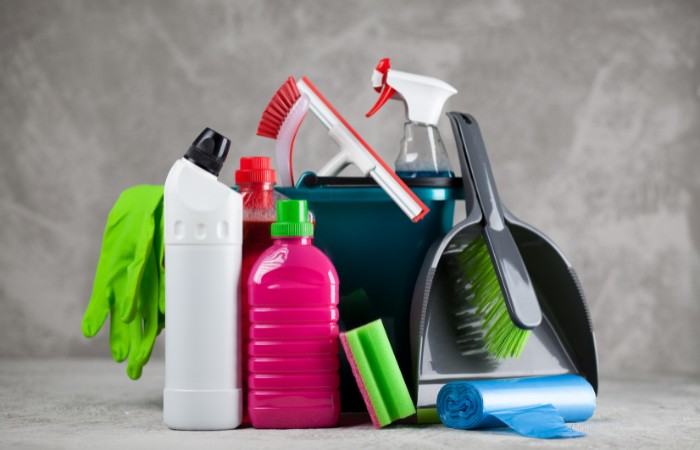
Pesticides and chemicals are commonly used in and around the home to control pests, clean surfaces and disinfect areas. While these products are effective at eliminating bacteria, they can also pose a threat to your well-being if not used correctly or stored safely.
Many household products contain hazardous chemicals like bleach or ammonia. When these toxins are released into an enclosed space like your home, they can lead to health issues such as breathing problems, skin irritation and even cancer.
Keep your home safe from dangerous chemicals:
- Keep chemicals and pesticides properly in storerooms and away from children
- Use natural alternatives such as vinegar and baking soda for cleaning
- Choose cleaning products with low toxicity levels
- Rinse the surface thoroughly after cleaning to get rid of any leftover chemicals
- Dispose of chemicals via a licensed waste disposal company or waste collection service (don’t dispose of them in the trash or down the drain)
5. Radon
Radon is a colourless, odourless and tasteless gas that’s naturally occurring in the environment. It can seep into homes through the soil and building materials, and enter through cracks and gaps.
The risk of radon exposure depends on the radon levels in your home, the length of time you spend at home and your health status. When humans are exposed to large amounts of this gas for extended periods of time, it can lead to lung cancer.
If you’re a non-smoker who has developed a persistent cough, shortness of breath or wheezing, you might want to check the radon levels in your home.
Minimise the risk of radon:
- Hire a professional to install a radon mitigation system
- Seal cracks and gaps in the foundation and walls of your home
- Improve ventilation by opening windows and using fans
Lifestyle and Habits
Adopting a healthy lifestyle and practising proper living habits can help to reduce your chances of falling sick. For example, by maintaining the cleanliness and air quality of your house, you can greatly reduce the amount of impurities and bacteria in the environment.
6. Irregular Cleaning
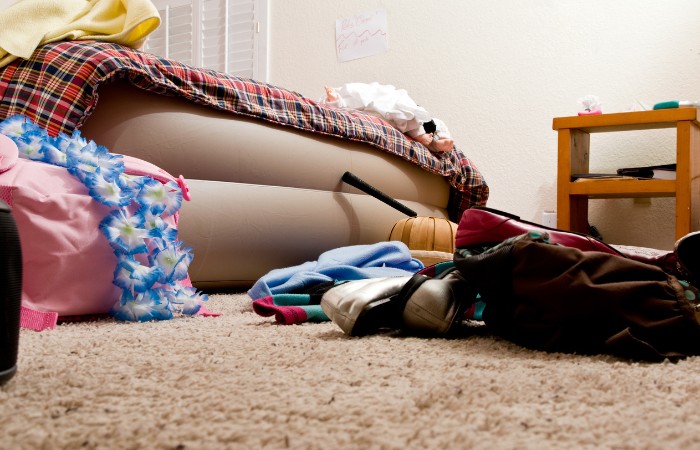
Not cleaning your home regularly can lead to a proliferation of germs and bacteria. This is especially so for areas like the kitchen, bathroom and carpeted rooms.
Keep your home clean:
- Clean and disinfect your kitchen and bathroom regularly
- Make sure to clean above your cabinets and fans
- Change out your bed sheets, pillowcases and sofa covers frequently
- Deep clean your carpets and rugs once every few months
7. Poor Ventilation and Air Quality
Fresh air is good for your lungs, brain and body. It can boost your mood, lower your heart rate, increase energy levels and even improve digestion.
A lack of fresh air circulation in the house can lead to indoor air pollution, which can cause headaches, fatigue and other health concerns.
Improve ventilation and air quality around the house:
- Avoid smoking indoors
- Open windows and doors to improve circulation and bring in fresh air
- Clean your air conditioner filters regularly
- Use air purifiers and fans
Other Factors
Apart from the factors mentioned above, here are some others that may be causing you to feel under the weather at home.
8. Excessively Dry Air
While an overly humid environment can promote the growth of mould and mildew, a space that’s excessively dry can cause health troubles too. Dry skin, irritated nasal passages and sore throat are some of the symptoms commonly associated with excessively dry air.
Keep your home balanced:
- Use a humidifier to increase humidity levels when the air indoors is too dry
- Minimise the use of air conditioners
9. Poor Lighting Conditions
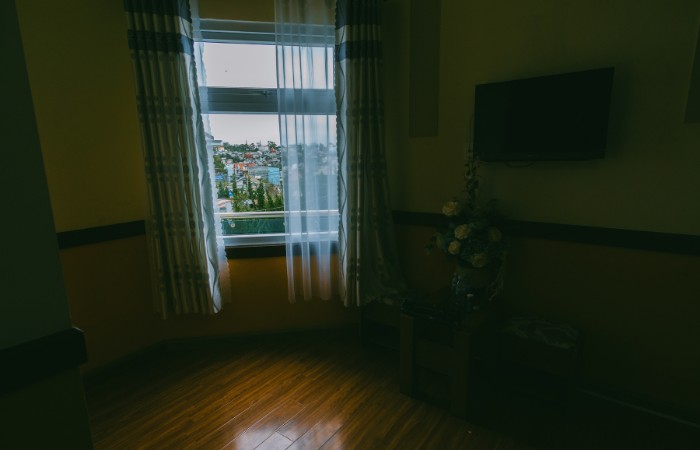
Living and working in an environment with inadequate lighting can cause problems such as eye strain, headaches, blurred vision and dry eyes.
Meanwhile, excessive exposure to bright light at night can disrupt your circadian rhythm and make it difficult to fall asleep. This can lead to sleep deprivation which can result in fatigue, increased irritability and an increased risk of chronic health conditions.
Ensure your home is adequately lit:
- Install additional light fixtures or replace existing ones with brighter, more energy-efficient options
- Use task lightings such as desk lamps or under-cabinet lights, to provide focused illumination where needed
- Maximise natural light by keeping your windows clean
FAQs About Your House Making you Sick
Why am I sick all the time?
There are many possible reasons why someone might feel sick all the time. Some common factors include:
- Living in a home that’s not ideal for one’s physical and mental health
- Weak immune system due to chronic stress, lack of sleep and a poor diet
- Exposure to allergens and toxins
If you find yourself feeling unwell all the time, and you know your home is not the cause, it’s best to seek medical attention immediately.
Can an air purifier make me sick?
In general, air purifiers are designed to improve indoor air quality by removing harmful particles and allergens from the air. However, there are some instances where an air purifier may actually make you feel sick.
Air purifiers that generate ozone can be detrimental to your health. Ozone can react with other chemicals in the air to produce substances that can cause damage to one’s eyes, nose and lungs. Children who inhale ozone for years may also suffer permanent lung damage.
Another reason why an air purifier could make you feel sick is when it’s not properly maintained. If the filter is not changed regularly, the purifier can become a breeding ground for mould, bacteria and other harmful microorganisms. This can cause breathing troubles and other health issues.
Can sleeping with a fan make me sick?
Sleeping with a fan is generally safe for most people and is unlikely to make you sick. In fact, using a fan in your bedroom can help keep your room cool and comfortable. It can also circulate the air and provide white noise to help you sleep more soundly.
However, there are a few possible risks associated with sleeping with a fan. The cool air blowing directly on your face or body can cause muscle stiffness or cramping. The fan may also stir up dust and allergens in the room, which can exacerbate allergies and respiratory problems.
To minimise these risks, allow your fan to oscillate and keep it at a distance so that it doesn’t blow directly on you. You should also clean the blades regularly to reduce the buildup of dust and allergens.
Can air conditioning give me a sore throat?
Air conditioning can sometimes cause a sore throat. When an air conditioning system isn’t well-maintained, it can circulate allergens, bacteria and other irritants that can cause inflammation and irritation in the throat.
Additionally, when you’re exposed to cold air for an extended period of time, it can dry out the mucous membranes in your middle ear, throat, and nasal passages. This can lead to a sore throat and respiratory issues such as dry cough.
What are the symptoms of sleeping in a dry room?
Sleeping in a dry room can cause a variety of symptoms that can be uncomfortable or even disruptive to your sleep. Some common symptoms of sleeping in a dry room include:
- Dry and itchy skin
- Dry and irritated eyes
- Stuffy nose
- Sore throat
- Headache
- Difficulty sleeping and poor sleep quality
How to Clean Walls and Remove Stains and Mould: Before and After Painting
